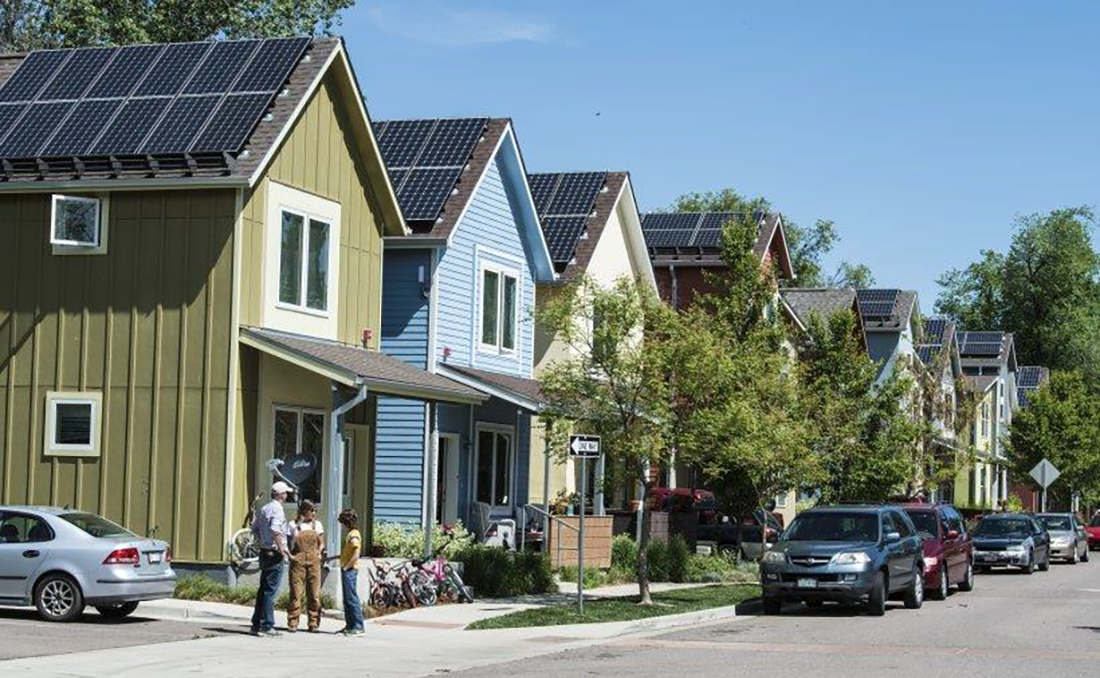Curious about the federal tax credit for solar photovoltaics (PV)? The Solar Energy Technologies Office’s (SETO’s) user-friendly informational guide gives an overview of the tax credit that you can claim for PV system costs. Check out the overview for everything you need to know, including eligibility, how-to’s, and FAQs—and don’t forget to explore SETO’s other tax credit resources.
Source: U.S. Department of Energy
Disclaimer: This guide provides an overview of the federal investment tax credit for residential solar photovoltaics (PV). (See the Federal Solar Tax Credits for Businesses for information for businesses). It does not constitute professional tax advice or other professional financial guidance and may change based on additional guidance from the Treasury Department. Please see their published Fact Sheet for additional information. The below guide should not be used as the only source of information when making purchasing decisions, investment decisions, tax decisions, or when executing other binding agreements.
What is a tax credit?
A tax credit is a dollar-for-dollar reduction in the amount of income tax you would otherwise owe. For example, claiming a $1,000 federal tax credit reduces your federal income taxes due by $1,000. The federal tax credit is sometimes referred to as an Investment Tax Credit, or ITC, though is different from the ITC offered to businesses that own solar systems.
What is the federal solar tax credit?
The federal residential solar energy credit is a tax credit that can be claimed on federal income taxes for a percentage of the cost of a solar PV system paid for by the taxpayer. (Other types of renewable energy are also eligible for similar credits but are beyond the scope of this guidance.)
The installation of the system must be complete during the tax year.
Solar PV systems installed in 2020 and 2021 are eligible for a 26% tax credit. In August 2022, Congress passed an extension of the ITC, raising it to 30% for the installation of which was between 2022-2032. (Systems installed on or before December 31, 2019 were also eligible for a 30% tax credit.) It will decrease to 26% for systems installed in 2033 and to 22% for systems installed in 2034. The tax credit expires starting in 2035 unless Congress renews it.
There is no maximum amount that can be claimed.

Am I eligible to claim the federal solar tax credit?
You might be eligible for this tax credit if you meet the following criteria:
- Your solar PV system was installed between January 1, 2017, and December 31, 2034.
- The solar PV system is located at a residence of yours in the United States.
- Either:
- You own the solar PV system (i.e., you purchased it with cash or through financing but you are neither leasing the system nor nor paying a solar company to purchase the electricity generated by the system).
- Or, you purchased an interest in an off-site community solar project, if the electricity generated is credited against, and does not exceed, your home’s electricity consumption. Notes: the IRS issued a statement (see link above) allowing a particular taxpayer to claim a tax credit for purchasing an interest in an off-site community solar project. However, this document, known as a private letter ruling or PLR, may not be relied on as precedent by other taxpayers. Also, you would not qualify if you only purchase the electricity from a community solar project.
- The solar PV system is new or being used for the first time. The credit can only be claimed on the “original installation” of the solar equipment.
What expenses are included?
The following expenses are included:
- Solar PV panels or PV cells (including those used to power an attic fan, but not the fan itself)
- Contractor labor costs for onsite preparation, assembly, or original installation, including permitting fees, inspection costs, and developer fees
- Balance-of-system equipment, including wiring, inverters, and mounting equipment
- Energy storage devices that have a capacity rating of 3 kilowatt-hours (kWh) or greater (for systems installed after December 31, 2022). If the storage is installed in a subsequent tax year to when the solar energy system is installed it is still eligible, however, the energy storage devices are still subject to the installation date requirements). Note: A private letter ruling may not be relied on as precedent by other taxpayers.
- Sales taxes on eligible expenses
How do other incentives I receive affect the federal tax credit?
For current information on incentives, including incentive-specific contact information, visit the Database of State Incentives for Renewables and Efficiency website.
REBATE FROM MY ELECTRIC UTILITY TO INSTALL SOLAR
Under most circumstances, subsidies provided by your utility to you to install a solar PV system are excluded from income taxes through an exemption in federal law. When this is the case, the utility rebate for installing solar is subtracted from your system costs before you calculate your tax credit. For example, if your solar PV system installed in 2022 cost $18,000, and your utility gave you a one-time rebate of $1,000 for installing the system, your tax credit would be calculated as follows:
($18,000 – $1,000) * 0.30 = $5,100
However, payments from a public utility to compensate for excess generated electricity not consumed by the taxpayer but delivered to the utility’s electrical grid (for example, net metering credits) are not subsidies for installing qualifying property and do not affect the taxpayer’s credit qualification or amounts.
PAYMENT FOR RENEWABLE ENERGY CERTIFICATES
When your utility, or other buyer, gives you cash or an incentive in exchange for renewable energy certificates or other environmental attributes of the electricity generated (either upfront or over time), the payment likely will be considered taxable income. If that is the case, the payment will increase your gross income, but it will not reduce the federal solar tax credit. Note: A private letter ruling may not be relied on as precedent by other taxpayers.
REBATE FROM MY STATE GOVERNMENT
Unlike utility rebates, rebates from state governments generally do not reduce your federal tax credit. For example, if your solar PV system was installed in 2022, installation costs totaled $18,000, and your state government gave you a one-time rebate of $1,000 for installing the system, your federal tax credit would be calculated as follows:
$18,000 * 0.30 = $5,400
STATE TAX CREDIT
State tax credits for installing solar PV generally do not reduce federal tax credits—and vice versa. However, when you receive a state tax credit, the taxable income you report on your federal taxes may be higher than it otherwise would have been because you now have less state income tax to deduct. (The Tax Cuts and Jobs Act of 2017 placed a $10,000 limit on state and local tax (SALT) deduction through 2025. Therefore, if a homeowner is still paying more than $10,000 in SALT after claiming a state tax credit, the state tax credit benefit would not effectively be reduced by the federal tax rate, as it would not impact federal taxes (due to the SALT limit).) The end result of claiming a state tax credit is that the amount of the state tax credit is effectively taxed at the federal tax level.
How do I claim the federal solar tax credit?
After seeking professional tax advice and ensuring you are eligible for the credit, you can complete and attach IRS Form 5695 to your federal tax return (Form 1040 or Form 1040NR). Instructions on filling out the form are available here.
Where can I find more information?
ASK QUESTIONS
Internal Revenue Service (IRS), 1111 Constitution Avenue, N.W., Washington, D.C. 20224, (800) 829-1040.
FIND RESOURCES
- View SETO’s other federal solar tax credit resources.
- The federal statute and IRS guidance: 26 USC § 25D at www.gpo.gov and “Q&A on Tax Credits for Sections 25C and 25D” at www.irs.gov.
- Updated information on the current status of the ITC: Database of State Incentives for Renewables and Efficiency entry on “Residential Renewable Energy Tax Credit” at www.dsireusa.org.
- The U.S. Department of Energy (DOE) Solar Energy Technologies Office (SETO) held a webinar on September 27, 2022, to discuss the recent policy changes in the Inflation Reduction Act. Watch the recording, download the slides, and read the Q&A.
- Download a PDF version of this webpage: Guide to Federal Tax Credit for Residential Solar Photovoltaics.
- Read the Homeowner’s Guide to Going Solar.






